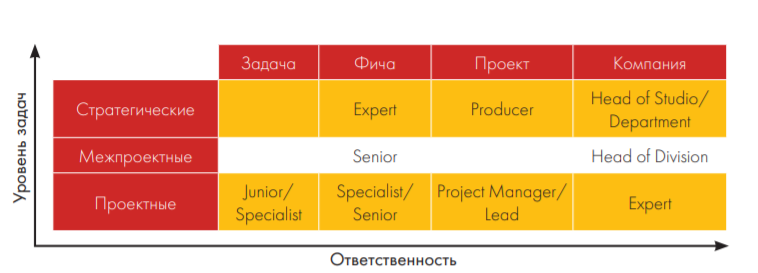"I want to go to Game Dev!": HSE teachers have written a book about the basics of game development. We publish an excerpt
A new book about game design is on sale. It’s called “I want to go to gamedev!”. This is a guide for beginners in the gaming industry, which explains who a game designer is and what his work consists of. We talk about the book and share a small excerpt from it.
The authors of the volume are Vyacheslav Utochkin and Konstantin Sakhnov, teachers of the HSE Graduate School of Business. They tried to guide readers through the whole path that a game designer overcomes when creating a game: from the pre-production stage to the preparation for release. At the same time, they told why people generally play video games, where to get ideas for projects and how not to burn out at the beginning of a career.
The company “Bombora” publishes “I want to go to gamedev!”.
Below is an excerpt from the book.
CAREER AS A GAME DESIGNER
The responsibilities of a game designer in different companies may differ. No, they will definitely be different! What we do is determined by the project, the approaches adopted in the company and the vision of specific people. The smaller the team and the project, the more different roles one game designer combines. But we must remember that there are many separate areas: level design, narrative design, technical design and others.
Somewhere you will only configure the product, somewhere you will write tons of documentation, in the third company you will create gameplay, in the fourth — all together. But one way or another, any game designer should be able to generate tasks for other specialists in order to improve the game. And, as you probably already realized, a career will depend not only on your efforts and personal qualities, but also on a specific company.
What is the career of a game designer? Most of those who enter the gaming industry are creative people, for them self—realization and personal development are not empty words. Therefore, when talking about development, it is important to understand that it is not only career, but also professional. They are also called vertical and horizontal growth.
Fig. 5. Career development of a game designer
By career development, we will understand what is called promotion: job growth, transition to team management, expansion of opportunities and responsibility for decision-making. We will leave to professional development the pumping of skills in our field, the growth of speed, quality, volume of knowledge, and most importantly — the depth of understanding of our business. This division is partly conditional, because career growth is often impossible without professional growth. And the strengthened skills of design and calculations push to increase.
A NOVICE GAME DESIGNER (JUNIOR) is usually responsible for a small area, performing tasks set by senior comrades, but can still set technical specifications for artists, testers, programmers and other employees (we will tell you further about how technical tasks are compiled). Junior starts game entities, mechanics, logic, writes descriptions, but rarely comes up with something new. This is work on the game design of content, although here you can have some freedom in making local decisions. By recruiting newcomers, studios assume their growth as specialists, so if a young employee has an idea for the development of the game, it is considered good practice to let him speak out. The key difference between the work of a novice employee: a mentor is most often assigned to him, checking any work done.
For a MID-LEVEL GAME DESIGNER, a large amount of work is documentation, especially if we are talking about a large company. Such a specialist is often present at meetings, participates in important discussions and has the opportunity to convey his idea of which way the project should develop.
Having gained the necessary experience, the game designer is already able to make some system decisions. Such a specialist may be responsible, for example, for the design of an entire class: these are in-game tasks (quests), character skills, balance with other classes, characteristics, and so on. Or he may be responsible for some significant system – for example, a system of characteristics. He can already set tasks for junior game designers (for example, to get a certain abilka for the Paladin class), has an idea of priorities and deadlines. A competently formulated task is enough for such a specialist, there is no need to check his work.
THE NEXT LEVEL (SENIOR) is the game designer of the game as a whole or a large system within the project. Such an employee undertakes the most difficult tasks: he has enough basic input data, he himself is able to find out all the details and make sure that the work starts and is completed on time. For example, he may be in charge of the entire monetization of the project, or he may be the designer of all pumping systems. Such people often distribute the tasks of introducing new features of the project by departments, and often their work determines the success of the game as a whole. There is less routine work at this stage; game designers independently come up with features, convey their ideas to the management and leading game designers, together with the project manager decide how and when it is better to implement them. Here, in addition to experience, the employee’s communication skills come to the fore — the ability to negotiate and defend their point of view.
There is also a LEADING GAME DESIGNER (LEAD). If a game designer really has a lot of experience, he can determine the direction of development of a game studio by choosing or coming up with ideas for new game projects. In large companies, you can grow up to be a director of a direction, including one related to game design (for example, become a creative director or product director). Such a person is a manager and often a visionary, responsible for the implementation of the game within the framework of a given idea and desired feelings, plus he builds work processes. Whether the project as a whole was successful or not is the responsibility of the leading game designer.
It is clear that this division is quite conditional and in different companies and on different projects it can be implemented in its own way. But if we try to generalize, then the path of a game designer is the path from a performer to an ideological inspirer.
Many gaming companies have adopted their own job grid and their own management model. There are studios with linear control, when everyone obeys a narrow circle of people. There are companies with project management, when there is a project manager and a producer, under whom the leads and their employees work.
It is convenient for a game publishing house to have a functional structure in which there are departments for purchasing traffic, creating creatives, community management, etc. and their bosses. In relatively large studios, it is convenient to use a matrix structure that combines project and functional managers. We will not consider specific positions, but we will see in which direction you need to develop for career and professional growth.
Fig. 6. From performer to mastermind
First of all, this is a responsibility. The greater the area and depth of your responsibility, the higher your position is likely to be. Beginners are usually responsible only for their own tasks. Middles and seniors already have whole features or directions in their area of responsibility. They may have several novice game designers under their command. The lead game designer, as a rule, leads the entire team of game designers on the project. It is the main source of all tasks and locally controls their execution. If the producer sets the overall vision, then the lead game designer is responsible for its implementation. He should give people specifics and be able to evaluate the result of their work.
In addition to expanding responsibility, we should also not forget about the growth of professional skills. The larger our area of influence, the more we need to know in order to effectively overcome the challenges we face.
Table 1. Areas of responsibility by position
Well, where to without communication skills? New positions always require us to interact better with people, listen more attentively and make decisions faster. Isolation and setting tasks only through a task tracker is not the best solution. For example, an art director asked an artist to draw a dragon for an action-RPG fantasy game. The task has been set, no additional questions have arisen, and we can safely expect results. How surprised the manager was when a week later the artist showed him a mechanical spider dragon! “What did you draw?!” — “A dragon,” the artist replied. “You didn’t specify the details, but that’s how I see the dragon.” This is a story about broken communication. About how important it is to describe in detail all the nuances of work in the terms of reference. And that we should be able to talk to each other.



